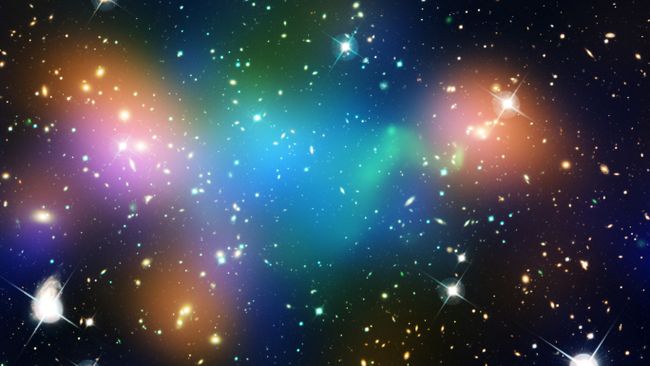Countless unseen ‘mirror stars’ might populate the Milky Way, and astronomers have the means to detect them.
Within our own universe, there might exist a complete realm comprised of ‘dark’ particles, and astronomers might have an inkling of where to begin searching: within the enigmatic cores of alleged ‘mirror stars’.
An invisible universe composed of stars, nebulas, and galaxies crafted entirely from dark matter might exist within our cosmic expanse. Astronomers have uncovered potential avenues to seek out this concealed realm.
To simplify, dark matter remains a profound mystery. Astronomers have amassed numerous independent indications, all pointing toward the presence of a form of matter in the universe that remains effectively imperceptible. It evades interaction with light but wields gravitational influence over regular matter. Dark matter is the force behind galaxies staying intact despite their rapid rotations, maintains cohesion within gas clusters despite soaring temperatures, distorts the trajectory of background light across the cosmos, and shapes the grandest structures in existence.
Despite compelling evidence, the identities of dark matter particles linger elusive. For years, cosmologists presumed a solitary variety of dark matter particle, one dominant across the universe. However, recent ponderings have contemplated whether dark matter might possess the same diversity as the ordinary universe. For instance, certain high-energy physics theories propose the existence of a mirror counterpart for each regular matter particle residing within the shadowy realm. In this cosmic perspective, there would exist dark electrons, dark quarks, dark neutrinos, and so forth, all interacting via their distinct fundamental forces, wholly distinct from the forces we comprehend.
This mirrored universe would pervade all but remain entirely imperceptible to us. How might we test this hypothesis? This query spurred a team of astronomers to a recent paper, not yet peer-reviewed, published on Nov. 29 on the preprint database arXiv. Surprisingly, they postulated that mirror stars could potentially manifest themselves, appearing vastly dissimilar to anything else discovered in the universe.
Mirror stars would emerge as varied species of dark matter interact, shedding energy and coalescing. This process mirrors the formation of regular stars, where hydrogen and helium collapse gravitationally, emit energy as photons, and condense adequately to create stars. However, these mirror stars would operate through their distinct forces of nature and emit radiation—albeit via the emission of dark photons, invisible to us.
The Milky Way galaxy alone might house millions, perhaps trillions, of these dark stars, considering dark matter accounts for approximately 80% of the mass of every galaxy.
Significantly, as the researchers recognized, these mirror stars retain gravitational pull, akin to how we initially discerned the existence of dark matter. Any massive, relatively compact entity, whether a standard star or a mirror star, will gravitationally attract surrounding matter. Consequently, these mirror stars will draw in gas and dust floating within the interstellar medium.
This ordinary matter will conglomerate into what the researchers term “nuggets.” As these nuggets collapse, they will generate heat and emit radiation. This emitted radiation will resemble that of a regular star but won’t match any identified star type. Instead, these nuggets will exhibit a deep red hue due to their lower temperatures compared to their standard stellar counterparts, and they will appear exceptionally faint owing to their relatively diminutive size.
However, other minuscule, faint entities exist in the universe, such as white dwarfs and planetary nebulas. The researchers concluded that these nuggets could be differentiated from white dwarfs based on the electromagnetic radiation wavelengths they emit. Encountering what seems like a faint white dwarf but emits an incorrect spectrum might indicate a normal matter nugget nestled within a mirror star. Furthermore, these nuggets will emit light in wavelengths uncommon in typical planetary nebulas.
While the notion of a mirrored universe remains highly hypothetical, the study underscores its potential as a testable, scientific concept. If mirror stars do exist, nuggets within their cores might indeed be present, and with meticulous and extensive surveys, we might just uncover them.
This article is republished from LiveScience under a Creative Commons license. Read the original article.
Do not forget to share your opinion with us to provide you with the best posts !




0 Comments